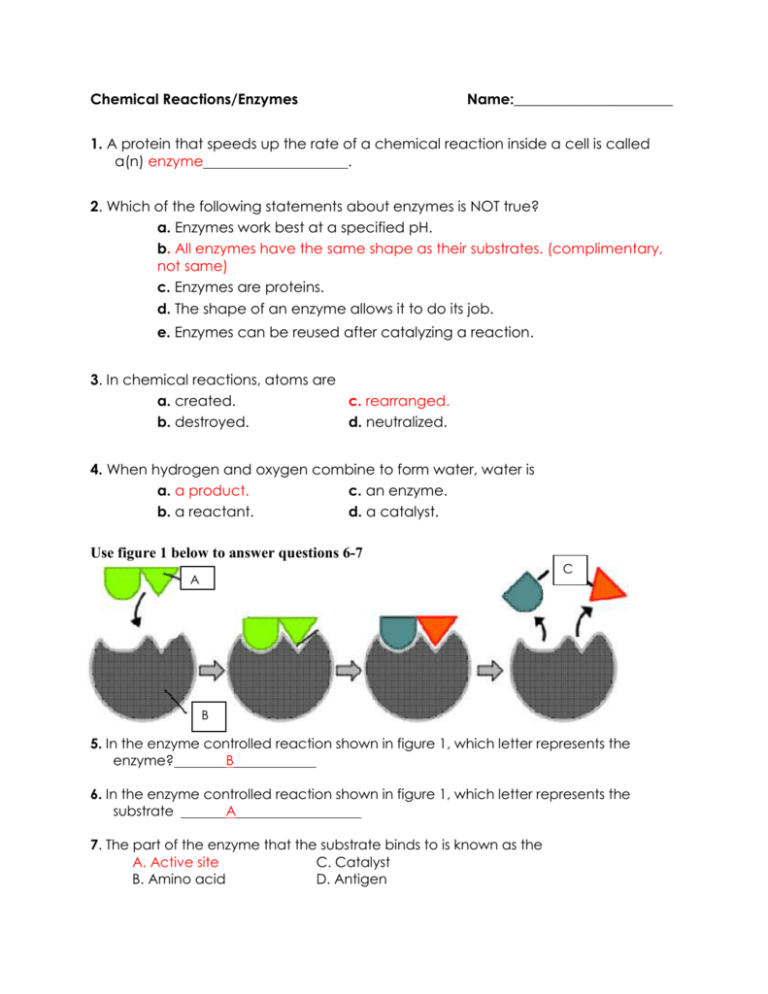Enzyme and Chemical Reactions Practce w/answers
advertisement

Chemical Reactions/Enzymes Name:______________________ 1. A protein that speeds up the rate of a chemical reaction inside a cell is called a(n) enzyme . 2. Which of the following statements about enzymes is NOT true? a. Enzymes work best at a specified pH. b. All enzymes have the same shape as their substrates. (complimentary, not same) c. Enzymes are proteins. d. The shape of an enzyme allows it to do its job. e. Enzymes can be reused after catalyzing a reaction. 3. In chemical reactions, atoms are a. created. c. rearranged. b. destroyed. d. neutralized. 4. When hydrogen and oxygen combine to form water, water is a. a product. c. an enzyme. b. a reactant. d. a catalyst. Use figure 1 below to answer questions 6-7 A C B 5. In the enzyme controlled reaction shown in figure 1, which letter represents the enzyme? B 6. In the enzyme controlled reaction shown in figure 1, which letter represents the substrate A 7. The part of the enzyme that the substrate binds to is known as the A. Active site C. Catalyst B. Amino acid D. Antigen 8. In the body, enzymes A. slow down the rate of a chemical reaction B. decrease the activation energy of a chemical reaction C. get used up during a chemical reaction D. become changed during a chemical reaction 9. A change in the shape of an enzyme is called ________. A. activation energy C. metamorphosis B. lock and key D. denaturation 10. What is the basic difference between exergonic and endergonic reactions? A. Exergonic reactions involve ionic bonds; endergonic reactions involve covalent bonds B. Exergonic reactions involve the formation of bonds; endergonic reactions involve the breaking of bonds C. Exergonic reactions release energy; endergonic reactions absorb energy D. Exergonic reactions involve covalent bonds; endergonic reactions involve ionic bond Use the diagram below to answer the following questions on the lines provided. Effect of Temperature on Two Enzymes That Function at Different Temperatures in Two Different Organisms Figure 2–1 11. According to Figure 2–1, which enzyme would you expect to find in a bacterium growing in a hot spring? Enzyme Y, because it operates at the highest temps. 12. According to Figure 2–1, at what temperature do the two enzymes have the same amount of activity? About 46 or 47 degrees 13. According to Figure 2–1, what are the optimum temperatures for each enzyme? X = about 42 Y = about 85 14. Based on Figure 2–1, which enzyme would have the most activity in humans? Enzyme X, near human body temperature (37 degrees C) 15. Based on Figure 2–1, which enzyme is active over the largest temperature range? Enzyme Y








